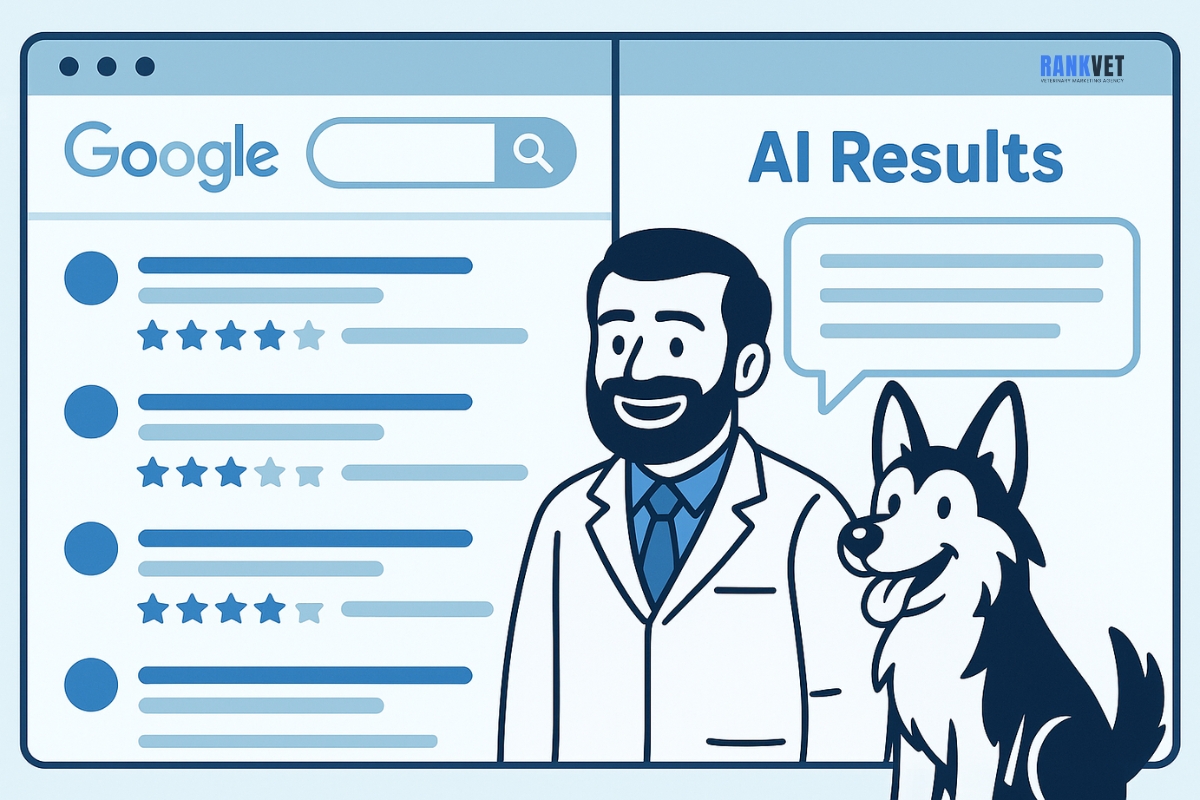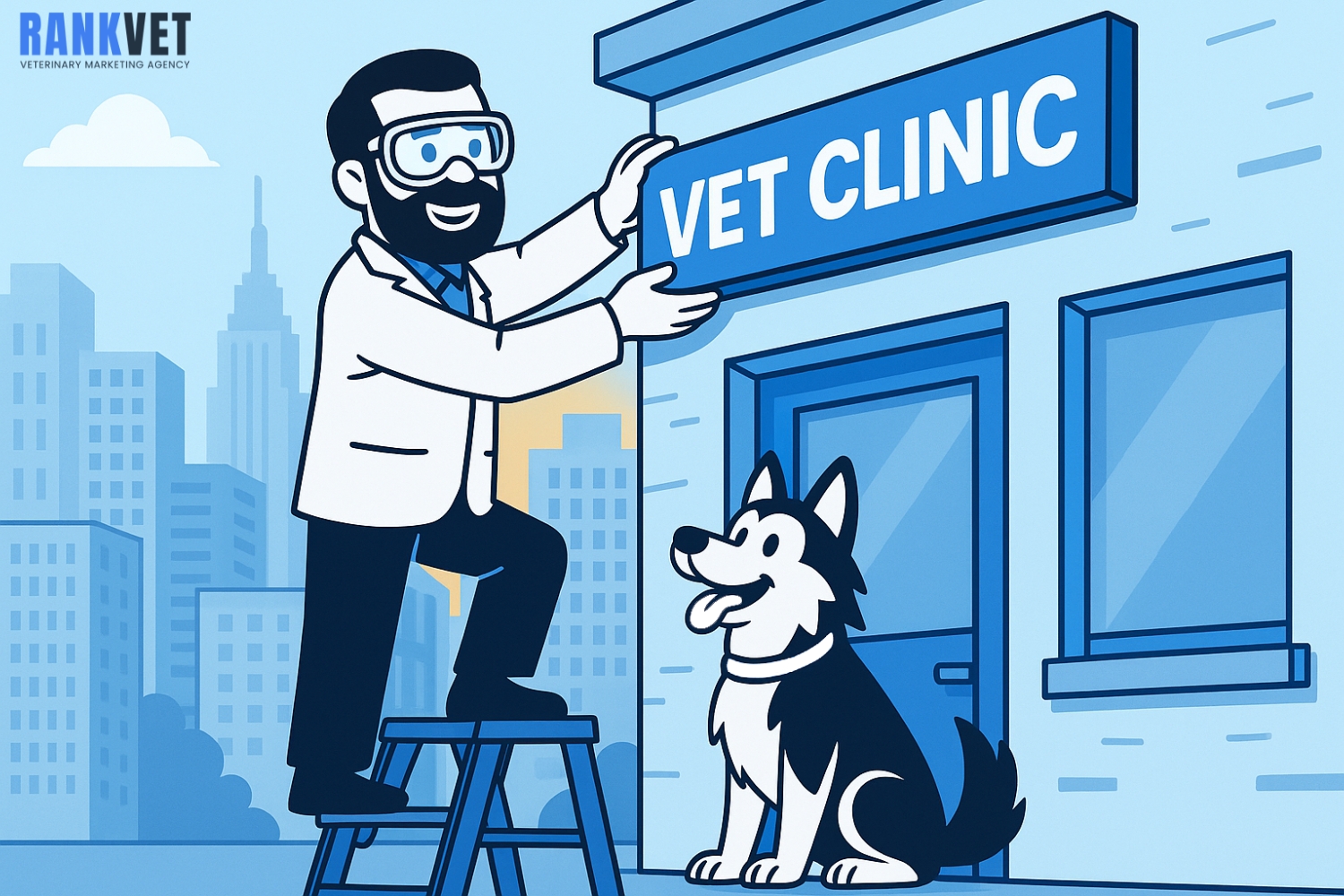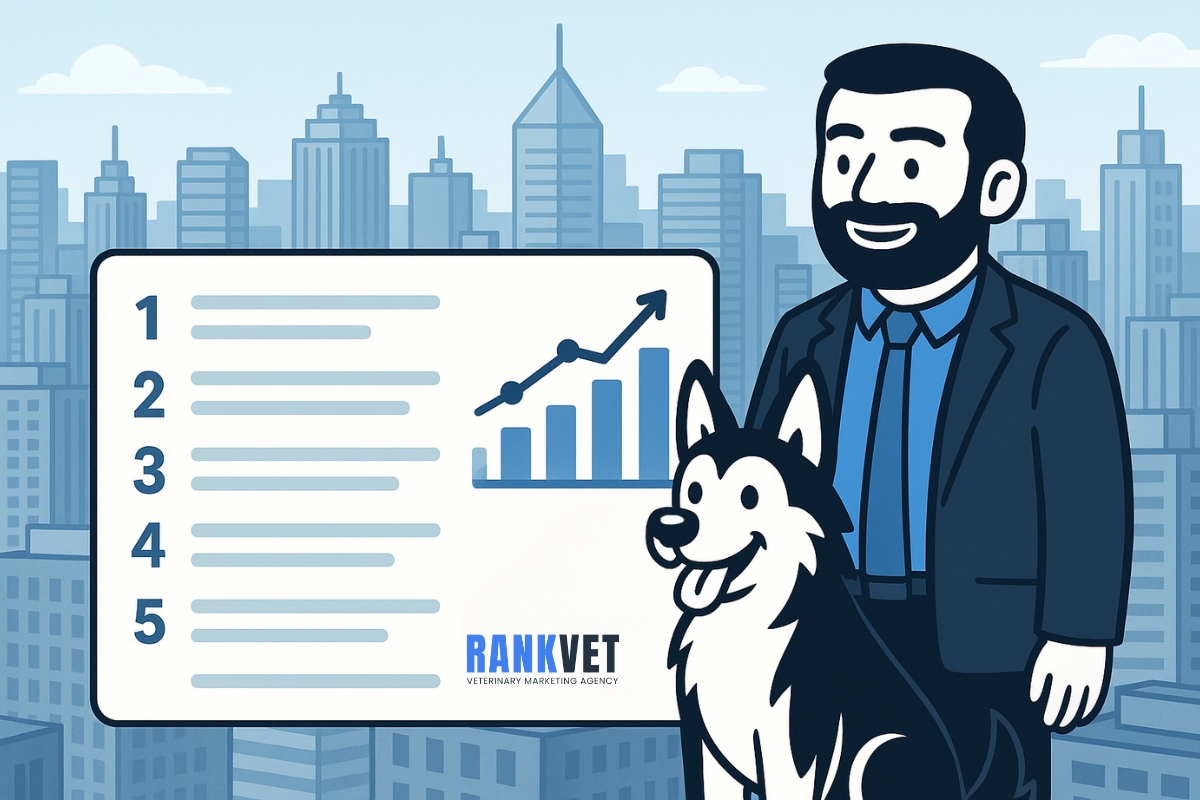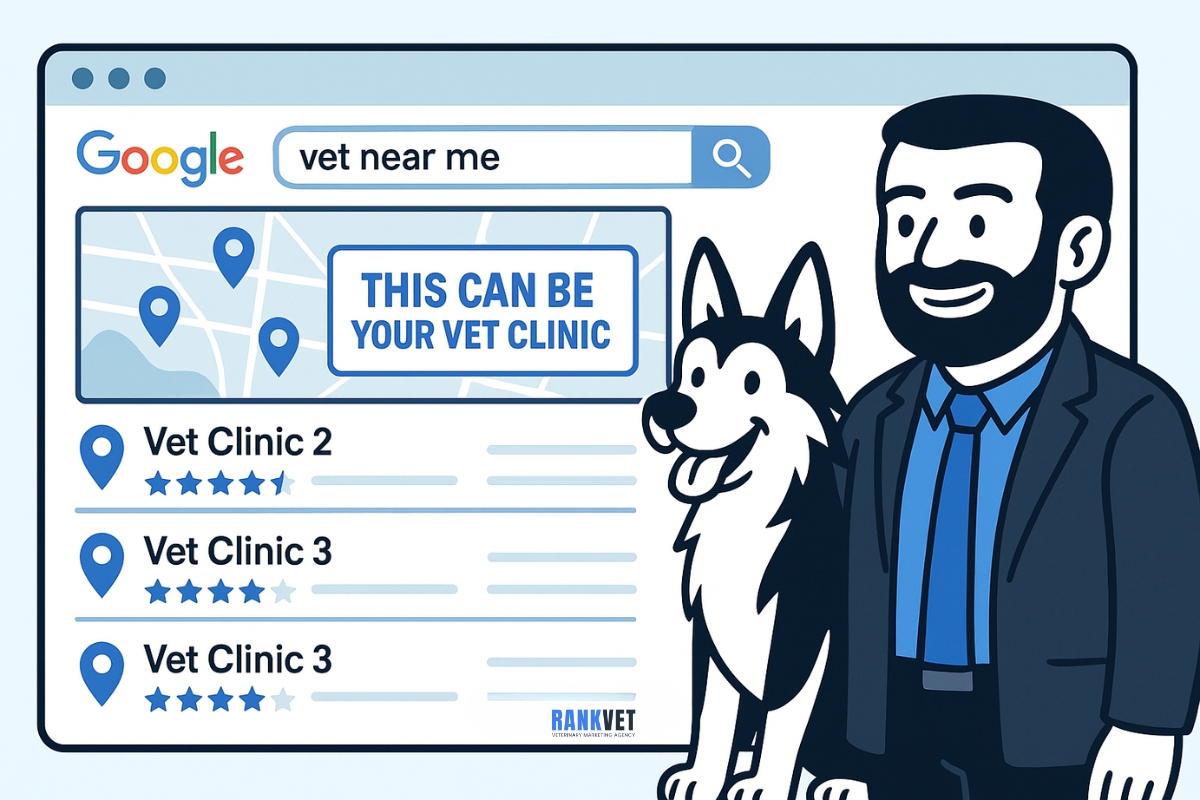Search is no longer a single list of blue links. In 2025 users routinely bounce between classic Google results, AI infused answer engines such as Perplexity or Claude, and hybrid experiences like Google’s own Search Generative Experience. For veterinary practices this split matters because visibility in one system does not guarantee exposure in the other. Google still drives the lion’s share of local traffic, but AI search is winning “zero click” mindshare by handing users concise, citation-rich answers without sending them anywhere. Below we break down exactly how the ranking math diverges, why your clinic’s content might shine in one feed and vanish in the next, and what concrete steps you can take today to win on both fronts.
The Evolution of Search – From Blue Links to Generative Answers
Early Google rewarded pages that matched exact keywords, counted backlinks, and loaded quickly. Over two decades the algorithm layered on RankBrain, BERT, Helpful Content, and more, but the output remained a ranked list. AI search engines flipped that paradigm. They use large language models to read the entire web as one giant knowledge graph, vectorize meaning rather than keywords, and assemble conversational answers on the fly. When a pet owner asks “Why is my cat limping after jumping off the couch?”, an AI engine blends veterinary forums, research papers, and top blogs into a single paragraph, then cites sources only if the user digs deeper. This means your article can influence the answer without ever appearing as a clickable result.
By contrast, Google’s ranking is still transactional: query in, list out, click through. The experience is evolving, but structured snippets, People Also Ask boxes, and the Local Map Pack still funnel users toward individual URLs. Understanding these twin pathways is the first step to an omnichannel visibility plan.
Ready to future proof your clinic’s visibility? Call RankVet at +1 (206) 900-9029 for a free consultation.
Understanding User Intent in the AI Era
Intent signals once meant matching “veterinarian open Sunday” to a nearby clinic page. AI engines infer deeper context: Is the searcher worried, researching costs, or looking for a home remedy? Large language models factor sentiment, urgency, and even follow-up probability. They also personalize heavily by region, browsing history, and real-time news. A limping-cat query in Seattle may surface orthopedic tips first, while the same phrase in Miami prompts heat related injury advice. Google personalizes too, but it still leans on explicit signals like location toggles and device type. AI personalization is probabilistic and fluid, which makes controlling ranking tougher but creates new openings for niche topical authority. Producing content that answers the “why” and “what next” rather than just the “what” positions your clinic as a preferred source the model weaves into its synthesized response.
Core Ranking Signals in Classical Google Search
Google evaluates hundreds of factors, yet three pillars dominate: relevance, authority, and user experience. Relevance flows from on-page optimization – title tags, H headings, keyword placement, and structured data such as FAQ schema. Authority is earned through backlinks, brand mentions, and more recently EEAT signals demonstrating veterinary expertise. User experience, once shorthand for page speed, now includes mobile friendliness, Core Web Vitals, and accessibility.
For local queries Google overlays proximity and consistency of NAP data. A [city] clinic with robust citation profiles and recent reviews can outrank a larger hospital across town if its domain authority is competitive. Crucially, every factor is URL centric: Google measures signals at the page level and aggregates them at the domain level. Improvement paths are clear – audit content gaps, build links, refine technical SEO, and solicit genuine client reviews.
Want a hands on roadmap? Book a free strategy call with RankVet today – no long term contracts, just month to month results.
Related Article: Cracking the Local 3-Pack: Proven Strategies to Dominate Google Maps in 2025
How Veterinary Queries Trigger Local Packs and Map Results
When a user includes geo terms like “near me” or implicitly searches from a mobile device in any city at 8 PM, Google’s local algorithm kicks in. It crosschecks your GBP profile, verifies categories, and looks for fresh photo uploads or Q&A responses. Reviews mentioning services – dental cleaning, emergency care – act as semantic relevance boosters. Distance, prominence, and relevance create the three legged stool of local rank. Unlike AI search, Google still surfaces the Map Pack first because users show high click intent when location matters.
How AI Search Engines Prioritize Content
AI ranking resembles real time research assistance. The engine embeds your article into high-dimensional vectors representing concepts such as “post-operative cat limping”. It scores passages on knowledge freshness, factual consistency with other sources, and linguistic clarity. Citations come from the most semantically aligned spans, not necessarily the highest authority sites. This levels the playing field for smaller clinics that publish deep, niche expertise. However, models penalize promotional fluff and shallow posts because those vectors signal low information density.
Moreover, AI search prizes multimedia context. An infographic explaining ACL surgery recovery may rank above a 3 000 word text wall because embeddings capture cross-modal relevance. Structured data remains useful, but open graph tags and alt text feed image understanding far more than they aid classic Google. Finally, conversational formatting – headings framed as direct questions, bullet lists summarizing protocols – boosts answerability.
The Role of Citations in AI Summaries
Unlike academic papers, AI engines choose when to cite. They weigh confidence in synthesized text against the risk of hallucination. Providing clear facts with verifiable figures increases citation likelihood. For example, publishing a case study “92 percent of RankVet optimized pages reached top three AI snippets within 60 days” gives the model a concrete statistic, boosting both exposure and authority. Embedding structured claim-review markup can further elevate trust scores.
Tactical SEO Differences – Optimizing for RankBrain vs RAG Systems
RankBrain, Google’s machine learning layer, judges how well your page satisfies click feedback loops. Longer dwell time and lower pogo sticking signal success. Retrieval-Augmented Generation systems in AI search don’t wait for user clicks. They run semantic retrieval upfront, then generate answers. Therefore your optimization levers shift from clickability to retrievability. Dense vector keywords, clear section labeling, and concise explanations matter more than irresistible title tags.
Schema still pays dividends, but think beyond FAQ and HowTo. Use <Claim>, <MedicalWebPage>, and author bio markup to reinforce veterinary credentials. Publish content in clusters – orthopedic injuries, preventative care, nutrition – so the model sees topical depth. This mirrors Google’s entity oriented indexing but with faster payoff in AI environments where link equity accrues slower.
Need help translating technical SEO into AI ready content? Reach out to RankVet for a no obligation audit.
Building a Future Ready Search Strategy for Your Clinic
Dual optimization starts with content inventory. Map each article to user intent stages – awareness, consideration, conversion – and tag whether it already ranks in Google, appears in AI snippets, or neither. Fill gaps with authoritative, human written insights supported by first party data like clinic success rates. Next, implement vector friendly on-page elements: descriptive subheadings, inline definitions, and numbered protocols. Diversify formats – short videos, annotated images, and interactive calculators – to feed multimodal models.
On the technical side ensure fast, secure hosting and valid schema for Google, but also expose clean API like JSON feeds that AI crawlers can parse efficiently. Monitor both Search Console and AI analytics tools for query share shifts. Most importantly, treat AI search as a brand amplifier. Even if it cannibalizes some clicks, being named as the authoritative source reinforces trust and drives direct navigation later.
Looking ahead, expect convergence. Google’s SGE is already merging answer generation with traditional SERPs. Clinics that master classic SEO fundamentals while embracing AI centric content design will dominate whichever interface a pet owner chooses.
Will optimizing for AI search hurt my Google rankings?
No. Practices such as writing comprehensive answers, adding schema, and improving content clarity benefit both systems.
How do I measure success in AI search?
Track brand-name mentions inside AI snippets, referral traffic from answer engines, and overall direct visits to your site.
Do backlinks still matter for AI search?
Less than in Google, but authoritative mentions contribute to trust signals that influence citation likelihood.
Should I create separate pages for AI search?
Not necessary. Instead enrich existing pages with deeper explanations, visuals, and structured data.
How often should I update content for AI visibility?
Quarterly reviews are recommended. AI models reward freshness and factual accuracy, so update statistics and clinical guidelines regularly.





